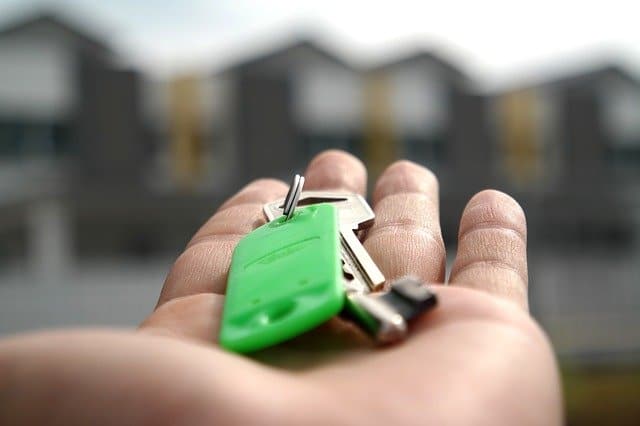Have you ever wondered what are the popular building materials in Kenya are? In this article, we will list these building materials used by Kenyans.
What does building material mean?
A building material is any material that is used for construction. There are many naturally occurring substances such as wood, clay, sand e.t.c. There are others that are more man-made such as cement, iron sheets, binding wires, tiles e.t.c
We will, therefore, try to discuss these materials in detail below.
List of popular building materials in Kenya
Below are some of the most commonly used building materials by Kenyans in their construction projects.
-
Sand
Sand is mostly used as part of the concrete mix during construction. At times, however, it may be mixed with lime and asphalt for masonry work.
Moreover, sand is extracted from river beds and then sifted for use in construction. Due to restrictions made in various counties against extracting sand from river beds, and is becoming one of the most expensive construction materials in Kenya.
On top of its use in construction, Sand may also be used for landscaping as well as in the making of glass.
A ton of sand may cost between Kes 1400 – 2000
2. Cement
Cement is one of the most popular construction material in Kenya and all over the world. It is majorly used to hold the stone and bricks in place especially when constructing a permanent structure.
Moreover, cement is also used when it comes to plastering, flooring, the building of bridges among other works.
These days, cement has become very affordable with a bag of cement costing between KES 530 – 950.
You can purchase a bag of cement with the amount of money you spent ordering Pizza.
3. Brick
There are two types of bricks. Those that are machine cut and those others which are cut by men. Bricks are mainly used in building strong foundations for houses. Whichever type it is, Bricks come in different sizes and shapes based on their strength.
However, in the recent past, there has been an upsurge of middle-class Kenyans using bricks to build their homes.
4. Thatch/grass
In the traditional days, it was very common to find people’s houses thatched in the grass. In these days, there is at least a hut in most rural homesteads that are thatched with grass.
Grass thatched houses are very cool. These days, you will find some buildings in recreational areas thatched with grass. However, its popularity among the rich and middle class earning groups of Kenya has reduced significantly.
5. Clay/mud
Clay and mud is a very popular building material in Kenya for those the poor majority.
It is a readily available material that does not cost anything apart from the effort. In some communities in the past, mud and clay were mixed with cow dung while building houses.
6. Fired bricks
Fired bricks are made out of clay which is molded into bricks. These clay bricks are air-dried and then burned in a kiln in order to harden them.
For those of us who grew up in the rural part of Kenya, we know all about this art and mode of making pocket money during the August holidays.
Fired bricks were commonly used as a building material in the post-colonial era in Kenya. Moreover, it is important to note that fired bricks cost way cheaper than stone bricks mentioned above.
A fired brick may cost between Kes6 – Kes10 while a stone brick may cost between Kes15 – Kes30.
Read More: Cost of building a house in Kenya
7. Wood
Wood is a popular building material in Kenya mostly used in making a panel, flooring, making door frames, doors, windows as well as ceilings.
For the longest time wood has been a must-use while building in Kenya. However, with the advent of industrialization in Kenya, most people are replacing the use of wood with metal.
8. EPS panel
EPS panels are prefabricated building materials whose use in Kenya is on the rise.
This technology is all about building the frames of a house in the factory and then transporting it to the site.
Prefabs provide a cheaper and faster way to construct buildings. The most commonly used prefabs are steel structures.
In the future, this is a technology that is predicted to evolve even more.
9. Ceramic tiles
There is a new wave in town whereby anyone building must Finnish up with installing ceramic tiles as flooring or even decoratives on the walls.
These days, if a rental house has no tiles, its value is deemed to decrease when compared to those others that have it.
Luckily, these tiles come in different designs, shapes and sizes and can be used for an even wider variety of uses.
10. Roofing tiles
When growing up, only the wealthy families had their homes roofed with roofing tiles. These days, there are some more advanced types of roofing tiles available in the market.
The most popular type of roofing tiles is clay tiles. However, it is important to note that if you decide to use this kind of roofing, it may end up costing you more as it requires more paneling support.
11. Coarse aggregators/Kokoto
A coarse aggregator is mainly rock that is broken into small pieces by use of either explosive or manually. In Kenya, the use of this building material is very common especially when it comes to building foundations and flooring.
12. Roofing Sheets
Roofing sheets are the most popular building material all over Kenya. These sheets come in different types, sizes, shapes, and colors.
However, it is worth noting that using roofing sheets is way cheaper than using roofing tiles these days. What’s more, is that there are many companies in Kenya manufacturing iron sheets and therefore meaning you can access them cheaply.
Conclusion on popular roofing materials in Kenya
Each day, there is a new innovation in the building industry that tries to reduce building cost and come up with more environmentally sustainable building materials. It is therefore very important to keep on the lookout of the new developments.




